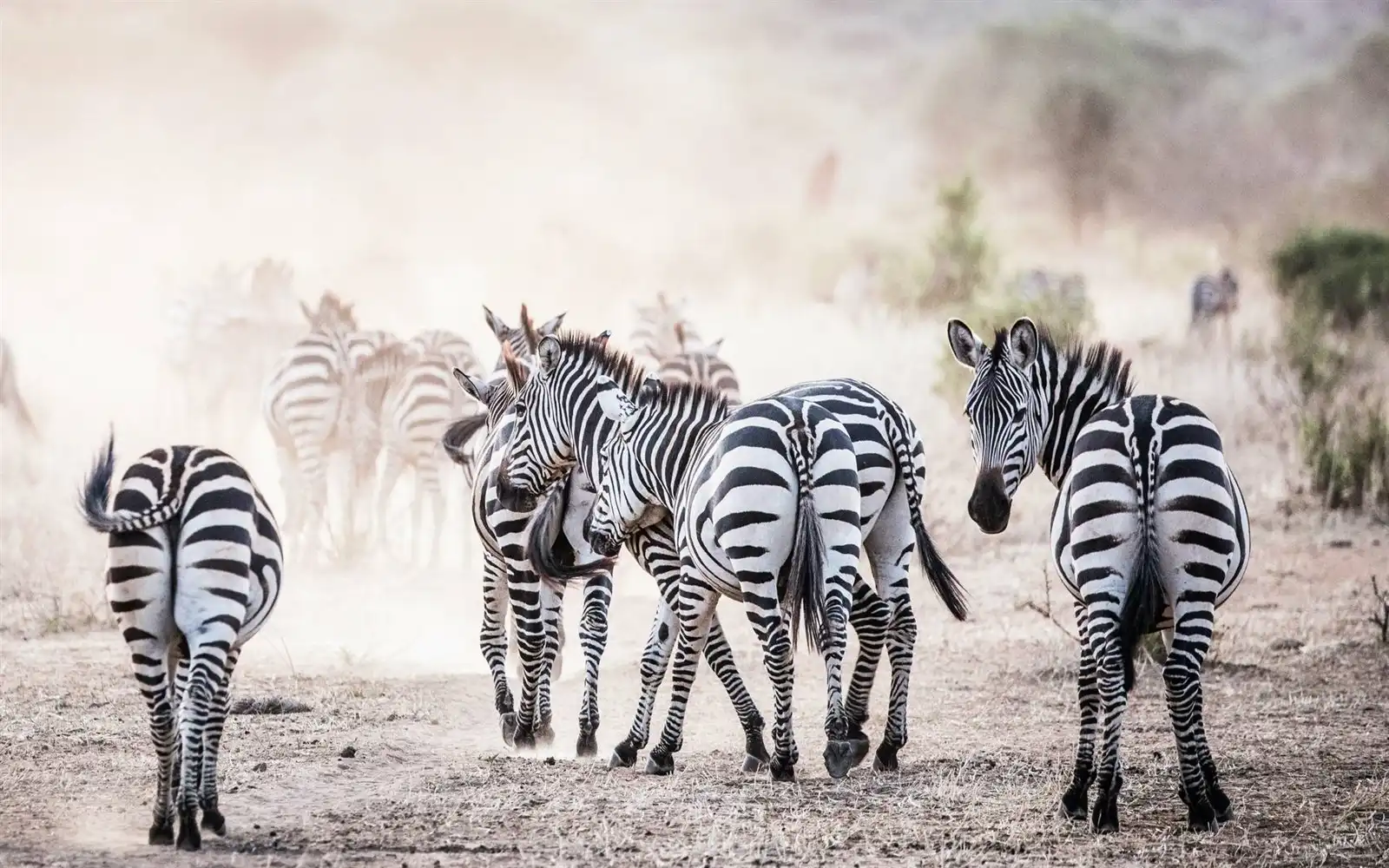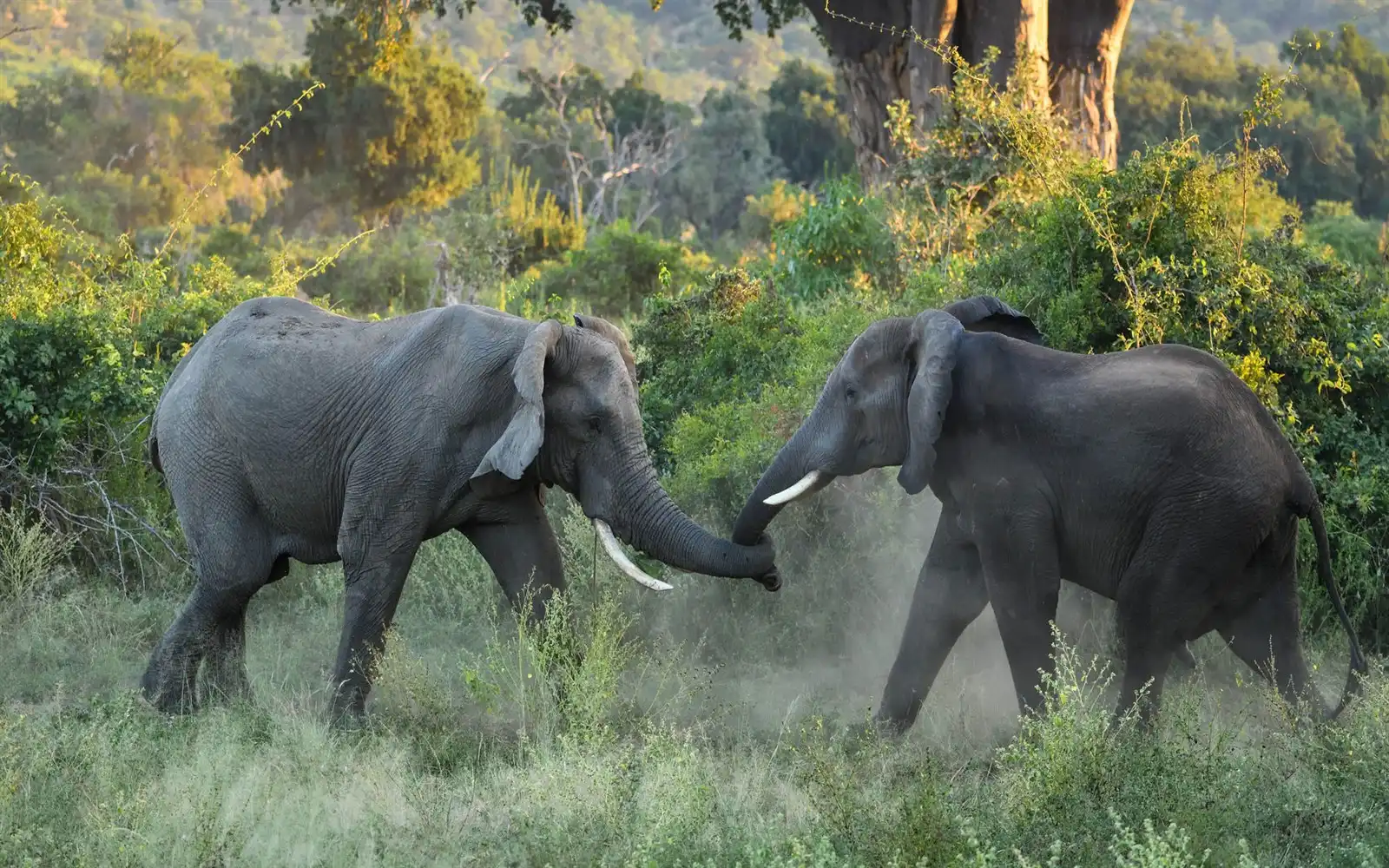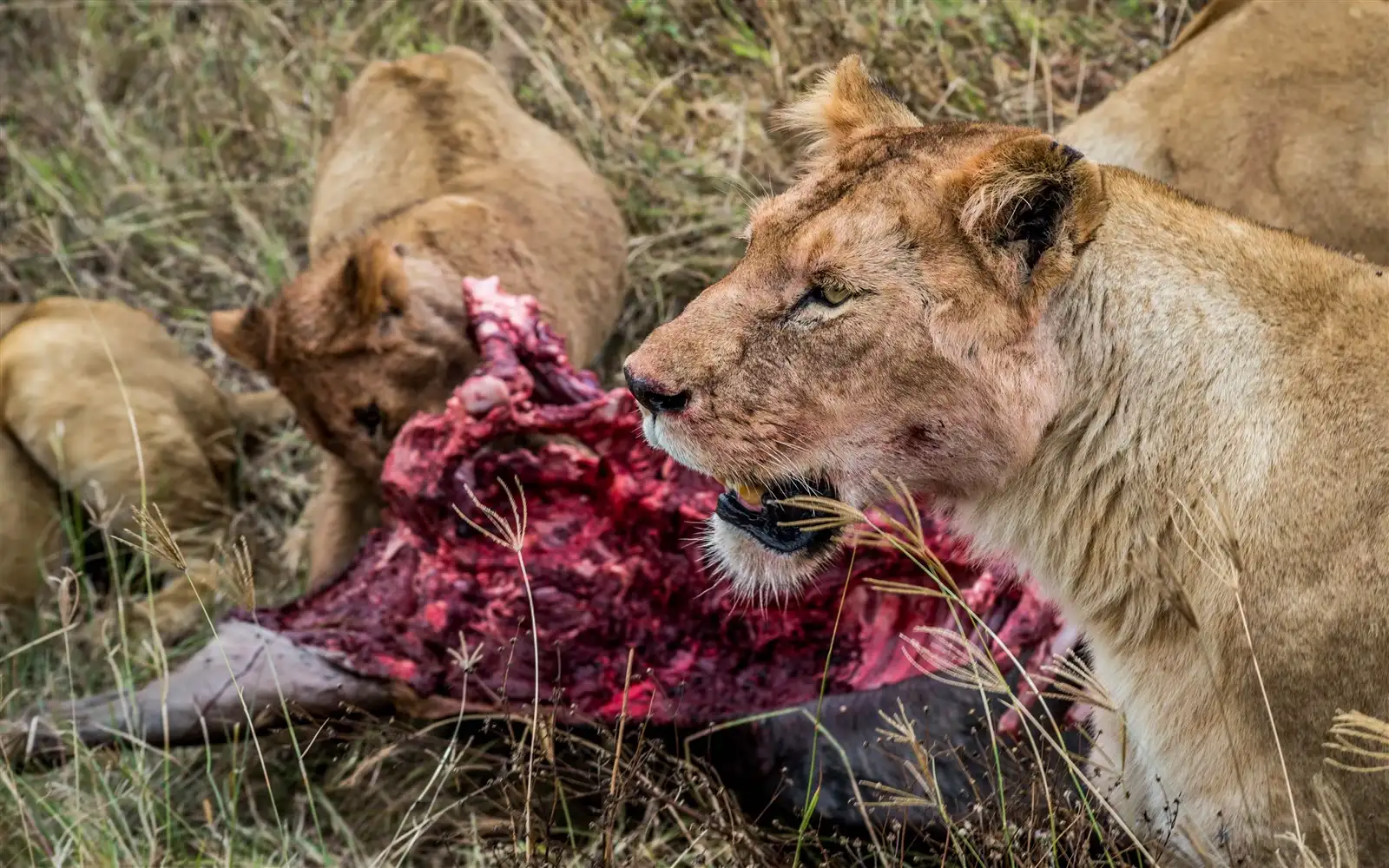
Nyerere National Park
Nyerere National Park
Nyerere National Park is a national park located in the southern part of Tanzania, East Africa. The park was formerly known as Selous Game Reserve, named after the famous British explorer Frederick Selous, but was renamed in honor of Tanzania's founding father, Julius Nyerere.
The park covers an area of over 30,000 square kilometers and is one of the largest protected areas in Africa. It is a UNESCO World Heritage Site and a designated Ramsar wetland of international importance due to its diverse ecosystems, including savannah, woodland, wetlands, and rivers.
Nyerere National Park is home to a wide variety of wildlife, including elephants, lions, leopards, cheetahs, giraffes, zebras, and hippos, as well as over 440 bird species. It is also home to the largest population of wild dogs in Africa.
The park offers a range of activities for visitors, including game drives, walking safaris, boat safaris, and fly camping. It is one of the best places in Tanzania to see wildlife in a natural and undisturbed environment, and it is also an important conservation area for many endangered species.
Wildlife in Nyerere National Park
Nyerere National Park, formerly known as Selous Game Reserve, is home to a diverse range of wildlife species. Here are some of the notable ones you can find there:
Elephants: Nyerere National Park is known for having one of the largest populations of elephants in Africa, with an estimated 40,000 individuals.
Lions: The park is also home to a significant population of lions, which can be spotted on game drives and walking safaris.
Leopards: Nyerere National Park is one of the best places in Africa to see leopards, as they are relatively easy to spot here due to the park's dense vegetation.
African Wild Dogs: Nyerere National Park has the largest population of African wild dogs in Africa, with over 1,000 individuals.
Hippos: The Rufiji River, which flows through the park, is home to large populations of hippos.
Crocodiles: The Rufiji River is also home to some of the largest crocodiles in Africa, which can be seen basking on the riverbanks.
Giraffes: Several species of giraffes, including the Masai and the reticulated giraffe, can be seen in the park.
Antelopes: Nyerere National Park is home to several species of antelopes, including impalas, elands, kudus, and bushbucks.
Baboons and Monkeys: Olive baboons and vervet monkeys are common in the park, and can often be seen near the river or in the woodlands.
Bird watching in Nyerere National Park
Nyerere National Park, formerly known as Selous Game Reserve, is a great destination for bird watching enthusiasts. The park is home to over 440 bird species, including several rare and endemic species. Here are some of the birds you can expect to see in Nyerere National Park:
Fish Eagle: The African fish eagle is a large bird of prey that is found near water sources such as rivers and lakes. Its distinctive call is often heard throughout the park.
Kingfishers: Several species of kingfishers can be seen in the park, including the giant kingfisher, pied kingfisher, and malachite kingfisher.
Storks: Nyerere National Park is home to several species of storks, including the saddle-billed stork, marabou stork, and open-billed stork.
Herons and Egrets: The park's rivers and wetlands provide habitat for several species of herons and egrets, including the black-headed heron, grey heron, and great white egret.
Southern Ground Hornbill: The southern ground hornbill is a large bird with distinctive red markings on its head and throat. It is a rare and endangered species, and sightings in the park are a special treat.
Pel's Fishing Owl: The Pel's fishing owl is a rare and elusive bird that is found along the park's waterways. It is one of the most sought-after birds by bird watchers in the park.
Yellow-billed Stork: The yellow-billed stork is a large wading bird with distinctive yellow markings on its bill. It is a common sight in the park's wetlands.
Secretarybird: The secretarybird is a large bird of prey with long legs and a distinctive crest of feathers on its head. It is found in the park's grasslands and savannas.
How to get to Nyerere National Park
There are several ways to get to Nyerere National Park, depending on your starting point and preferences. Here are some of the options:
Air: The nearest major airport to Nyerere National Park is Julius Nyerere International Airport in Dar es Salaam, which is approximately a 5-hour drive away. There are several domestic airlines that offer flights from Dar es Salaam to airstrips near the park, including Mtemere, Selous, and Siwandu.
By Road: Nyerere National Park is located about 230 km southwest of Dar es Salaam, and the most common way to get there is by road. You can either drive yourself or hire a car with a driver. The drive takes approximately 5-6 hours, depending on road conditions.
By Train: The Tanzania-Zambia Railway Authority (TAZARA) operates a train service between Dar es Salaam and the town of Kisaki, which is located about 50 km from the park. From Kisaki, you can hire a car or take a bus to the park.
By Boat: If you are staying in one of the lodges or camps inside the park, some of them offer boat transfers from nearby towns such as Stiegler's Gorge or Mloka. This option can be more expensive but can offer a unique and scenic journey.
It's important to note that some parts of the park can only be accessed by 4x4 vehicles, especially during the rainy season when roads can be muddy and difficult to navigate.
History of Nyerere National Park
Nyerere National Park, formerly known as Selous Game Reserve, has a rich and complex history. Here are some key events in the park's history:
Early History: The area that is now Nyerere National Park has been inhabited by humans for thousands of years. Traces of human habitation, such as rock paintings and stone tools, have been found in the area.
Colonial Era: In the late 19th and early 20th centuries, the area was part of German East Africa and later British East Africa. European hunters and explorers were attracted to the area for its abundant wildlife, and hunting safaris became a popular pastime.
Establishment of the Game Reserve: In 1896, the British colonial government established the Selous Game Reserve, named after Frederick Selous, a famous hunter and explorer who was killed in action during World War I. The reserve was initially established to protect wildlife and hunting grounds.
Expansion of the Reserve: Over the years, the Selous Game Reserve was expanded several times, and its boundaries were adjusted to include new areas of wildlife habitat.
UNESCO World Heritage Site: In 1982, the Selous Game Reserve was designated a UNESCO World Heritage Site in recognition of its outstanding natural and cultural value. The park was recognized as one of the largest remaining wilderness areas in Africa, with high levels of biodiversity and unique ecosystems.
When to visit Nyerere National Park
The best time to visit Nyerere National Park, formerly known as Selous Game Reserve, depends on your preferences and what you want to see and do. Here's some information to help you decide:
Season (June to October): This is generally considered the best time to visit Nyerere National Park. The weather is dry and sunny, making it easy to spot wildlife. The vegetation is also less dense, making it easier to see animals. However, this is peak season, so the park can be busy and accommodation prices may be higher.
Wet Season (November to May): This is the rainy season in Tanzania, and while it can be wet and muddy, it is also a good time to visit the park for several reasons. Firstly, the park is quieter, and accommodation prices are lower. Secondly, the scenery is lush and green, and the birdlife is abundant. Finally, many animals give birth during this season, making it a good time to see young animals.
Shoulder Seasons (March to May and November): These are the transition periods between the dry and wet seasons. During these months, the park is quieter, and prices are lower. Wildlife can be slightly harder to spot, but the scenery is still beautiful.
It's important to note that some lodges and camps in the park close during the wet season, so it's important to check availability and opening times before planning your trip.
Things to do in Nyerere National Park
Nyerere National Park, formerly known as Selous Game Reserve, offers a wide range of activities and experiences for visitors. Here are some of the things you can do while in the park:
1. Game Drives: Game drives are the most popular activity in the park, and for good reason. Nyerere National Park is home to a diverse range of wildlife, and game drives offer a great opportunity to see animals such as elephants, lions, leopards, hippos, and crocodiles.
2. Walking Safaris: Walking safaris are a unique way to experience the park and get up close to some of the smaller animals and plant life. Walking safaris are usually led by experienced guides who can share their knowledge of the park's ecology and history.
3. Boat Safaris: Boat safaris are a great way to explore the Rufiji River, which flows through the park. Boat safaris offer a different perspective on the park's wildlife and can be a great way to see animals such as hippos, crocodiles, and birds.
4. Fly Camping: For a more adventurous experience, you can try fly camping. Fly camping involves setting up a temporary campsite in the bush, usually with just a bedroll and mosquito net. It's a great way to experience the park's wildlife up close and personal.
5. Cultural Visits: You can also visit nearby villages and learn about the local culture and traditions. This can include visiting traditional Maasai bomas, meeting local artisans, and learning about the history of the area.
6. Fishing: The Rufiji River is also a popular spot for fishing, with species such as tigerfish, catfish, and tilapia found in the river.
7. Bird Watching: With over 440 bird species recorded in the park, Nyerere National Park is a great destination for bird watchers. Species such as the African fish eagle, kingfishers, and storks can be seen along the riverbanks.
8. Photography: The park's stunning scenery and wildlife provide great opportunities for photography. Whether you're an amateur or professional, you're sure to capture some incredible shots in Nyerere National Park.
It's important to note that some parts of the park can only be accessed by 4x4 vehicles, especially during the rainy season when roads can be muddy and difficult to navigate.


